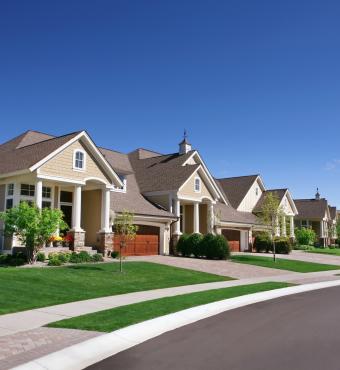Kamala Harris announced her proposed housing plan last week. The policy will be expensive – perhaps as much as $500 billion - and will do much less to facilitate home ownership than it could, because it does not address the most important reason why housing is expensive: high construction costs. Instead, the plan significantly subsidizes housing demand, which will put upward pressure on housing costs.
One of the biggest demand subsidizers in the proposal is to provide $25,000 to first-time home buyers, perhaps in the form of a tax credit, though that has not been specified yet. Her proposal states this award will be available to “over 4 million” households. The “over” part of this proposal is what could make it so expensive, because “over” could be “way over.” Let’s take a look at some possibilities.
There are about 44 million US households who rent. The proposal’s eligibility requirements do not appear to be stringent: it requires that someone in the household works and that the household has not been delinquent on rent payments for two years. In 2020, as the economy was suffering from the pandemic, about 18 percent of renters were delinquent. Delinquency dropped to 11.5 percent last year.
You may think that the requirement of being a first-time homebuyer would limit eligibility, but it doesn’t. One reason is because the term “first-time homebuyer” does not mean “first time.” HUD classifies you as a first-time homebuyer if either you or your spouse has not been an owner of your principal residence for the last three years. This includes a married couple in which one person did not have their name on the deed of their home. It also includes people who own property but rent their principal residence. And the three-year requirement will not be an issue in any case, because only 1–2 percent of homeowners each year become renters. If Harris’s plan follows the HUD definition of a first-time homebuyer, then the $25,000 down payment assistance would appear to be accessible to nearly all renters, provided they have been current on their rent for the previous two years—or at least not be shown to be delinquent on a verifiable report or eviction action—and that someone in the household works.
Based on the information Harris provided, I expect about 20 million US renters would be eligible and apply for this program if Harris wins the presidency. This is based on the following set of assumptions: First, I assume that 95 percent of renters will find a way to qualify as a first-time homebuyer per the federal (HUD) definition. Second, I assume that 55 percent of that group of households will satisfy the work requirement and the non-delinquency requirement. This yields about 23 million households who would be eligible. Given that over 80 percent of renters express a preference for becoming a homeowner, I assume that 80 percent of this group would apply. The last assumption may be conservative, given the size of the downpayment subsidy. This calculation yields about 18.5 million current households who would be eligible and apply. Finally, I add 10 percent to account for growth in the number of households over time (5 percent growth over the four years of a hypothetical Harris presidency) and program fraud (5 percent, which is the average rate of fraud within federal programs). This totals about 20 million households.
If the $25,000 down payment were to be awarded to all of these 20 million households, then this would cost about $500 billion. And it would include some households—possibly many—who would be able to purchase a home without taxpayer assistance. And it would include some households—possibly many—who probably shouldn’t have the responsibility of homeownership.
This also raises the question of what types of homes these households would be able to purchase. The answer is: extremely small or low-quality homes. The median household income of renters in 2022 (the last year for which data is available) is only about $42,000. Using a mortgage calculator and assuming a 30-year mortgage rate of 7 percent (and that the household pays 30 percent of their pre-tax income for their mortgage, property taxes, and insurance) yields a home value of about $146,000 for which a median-income renter could qualify for. This is far below the median US home price of about $412,000.
Because renters tend to have low household incomes, Harris also proposes to give tax incentives to builders to construct “starter homes,” provided those new homes are sold to first-time homebuyers. The reason that “starter” (small) homes are in scarce supply is because it isn’t very profitable for builders to develop small homes. The main deficiency with the Harris plan is that it doesn’t address the most important issue facing home affordability: that home construction is very expensive.
An important reason why construction costs are high is because most homes are built the same way they usually have been: on site, by specialized construction workers. It makes little sense to try to put low-income households into new, traditionally built homes. But there is a better way: manufactured housing, which are homes built from start to finish within a factory, which are thus able to leverage the efficiencies of modern, mass-production technologies. Traditionally built homes are more than twice as expensive to build per square foot than manufactured homes. Moreover, manufactured-home technology is exceptionally efficient for small homes. With building costs of only about $82 per square foot, this technology can deliver a 1,000-square-foot “starter home” at a cost of about $100,000, which would be affordable for many renters, and without an expensive taxpayer subsidy.
Before 1974, manufactured homes accounted for about one in three single-family homes in the US. At that time, these homes were shipped to a property site, placed on a foundation, and connected to utilities. But beginning in 1974, Congress required manufactured homes to be permanently attached to a rolling trailer, which effectively turned them into mobile homes. And with an unsightly permanent trailer, these homes became regulated out of existence in nearly all neighborhoods outside of trailer parks and very rural areas. They now account for only about 10 percent of single-family homes.
Increasing the adoption of manufactured housing can be accomplished by eliminating the permanent trailer requirement, which serves no useful purpose. This could be a game changer for many low-income families and essentially is costless to do.
Harris also calls for $40 billion in taxpayer funding for an “innovation fund” to “empower local governments to fund local solutions to build housing.” I have concerns about this proposal, because what we have learned is that government interventions in the housing market—whether federal, state, or local—have often backfired, as they have driven up costs.
California’s experience is the poster child for this failure. Between 2017 and 2022, California passed nearly 100 new housing laws, yet California homebuilding remains severely depressed. Moreover, the cost of building “affordable” housing in California, which includes substantial government involvement, can surpass $1 million per apartment unit.
Expanding housing affordability, particularly for low-income households, requires reducing construction costs. There is a simple and virtually costless way of doing this by removing one regulation that significantly limits the use of manufactured housing, and manufactured housing is realistically the only way for low-income households to afford to purchase a home. But the Harris plan focuses on subsidizing demand, not improving the efficiency of supply. Hers is a potentially very expensive program that moves us away from legitimately increasing affordability.

















